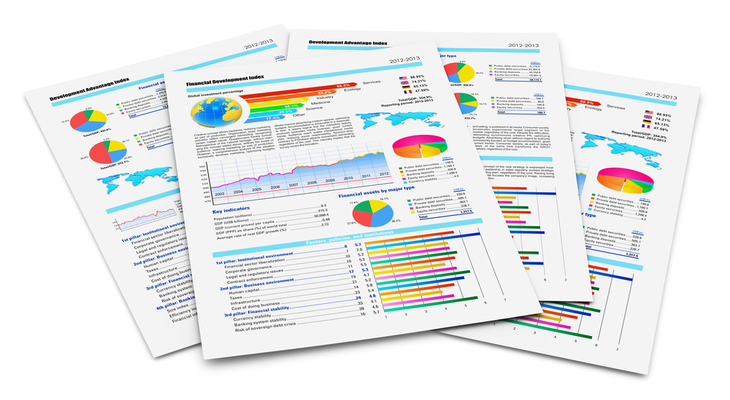There are lots of SEC filings that stock traders and market analysts have to wade through, but few are as important as the SEC 13F Filings, which is filed by hedge funds and other institutional investment managers.
The reason you have been hearing about this document recently is because of the Reddit trading frenzy that has caused wild swings in some heavily-shorted stocks like GameStop (NYSE: GME), Koss (NASDAQ: KOSS), AMC Entertainment (NYSE: AMC).
Let’s find out more about what traders should know about the SEC Form 13F, including a guide on how you can use the information.
What is SEC Form 13F?
A 13F filing is a quarterly report that must be submitted by institutional investment managers to the SEC at the end of a calendar quarter to disclose their investments in U.S. stocks.
All hedge funds, mutual funds, trust companies, registered investment advisers, pension funds and insurance companies with at least $100 million in assets under management have to submit quarterly 13F filings to the U.S. Securities and Exchange Commission (SEC).
But in July 2020, the SEC had proposed a controversial plan that would have increased the disclosure threshold from $100 million to $3.5 billion.
The regulator said it wanted to lower compliance burdens on small institutional investment managers while continuing to keep an eye on the portfolios of the largest ones.
They also claimed that the relative significance of managing $100 million in assets has “declined considerably” since Form 13F filing was introduced more than four decades ago.
While 13F filings can be delayed by as many as 45 days after the conclusion of every quarter, they are still closely watched by investors, traders, companies, analysts and rival institutional investment managers as the most revealing peak into a fund’s stock holdings.
Some of the most widely known hedge funds include Point72 Asset Management, Candlestick Capital Management, Maplelane Capital, D1 Capital Partners, Melvin Capital, and Citron Research.
What does the SEC Form 13F contain?
Here is a non-exhaustive summary list of what is contained in the document:
- The issuer name of all securities owned by the fund.
- A description of the class of security listed (e.g., convertible debenture, put/call option, common stock, class A shares).
- The number of shares owned by the fund as of the end of the calendar quarter.
- The fair market value of the securities listed, as of the end of the calendar quarter for which the 13F is filed.
Where to find SEC Form 13F
Traders can find the 13F filing of a U.S. hedge fund under the SEC’s EDGAR System company search website.
EDGAR, short for Electronic Data Gathering, Analysis, and Retrieval system, is a site with millions of individual and company filings.
Here, you can search for the hedge fund you are interested in under “Company and Person Lookup”.
You can also get Form 13F filings from the website of your online brokerage firm.
What should traders look out for in SEC Form 13F?
What information should you dig for in a 13F filing before making a trading decision?
Well, many day traders have sought to use 13F filings as a guide for their own trading strategies because these filings provide them with a look at the holdings of the top stock pickers on Wall Street.
Not only are the nation’s biggest hedge funds presumed to be the smartest, but their size also gives them the power to move the market. Therefore, buying or selling the same stocks makes sense as a strategy.
However, it is important to remember that a 13F filing does not tell the whole story, because institutional investment managers are only obliged to reveal their long positions with the SEC. The regulator only requires them to reveal their short positions.
For example, a hedge fund that has made a bearish bet against shares of a given company by shorting call options could also be long some shares of the company.
While this long position might be disclosed in a form 13F and you may assume the hedge fund is bullish, the filing will only tell you part of the story because you will not be able to seen the bearish/short side of the fund’s position.
So now that you know what a Form 13F is and how to find them; now let’s look at how you can use them to trade stocks.
Using 13F filings to find stock tips
The key to reading a 13F is to pick up important information related to the stocks that a hedge fund holds.
But as previously mentioned, don’t assume that just because a hedge fund has invested in a stock means it is as good a deal. Moreover, hedge funds have already executed their trades by the time they file Form 13F.
This means that the stock may not be a good investment by the time the document is filed as it was when the trade was made. But a 13F filing still has some great information despite these caveats.
By comparing 13F filings, you can see what stocks different hedge funds have added to their portfolios and what they have unloaded. Either way, the list of stocks you find in these filings can be an excellent way to at least begin thinking about trading ideas.
In addition, combining 13F forms over time gives you a picture of who is buying and selling a given stock. This also reveals important information (e.g., biggest buyers, sellers and liquidations) which make your trading activities more productive.
Bottom Line
13F filings provide a detailed portfolio snapshot of the world’s best money managers and traders, all regularly and for free. Using this document is easy and free, enabling small traders to know find out what securities the smart money is buying or selling.
This can be a useful way to get great trading ideas from big-name traders like Warren Buffett, Ray Dalio, Carl Icahn, George Soros, Peter Lynch, and many more.


